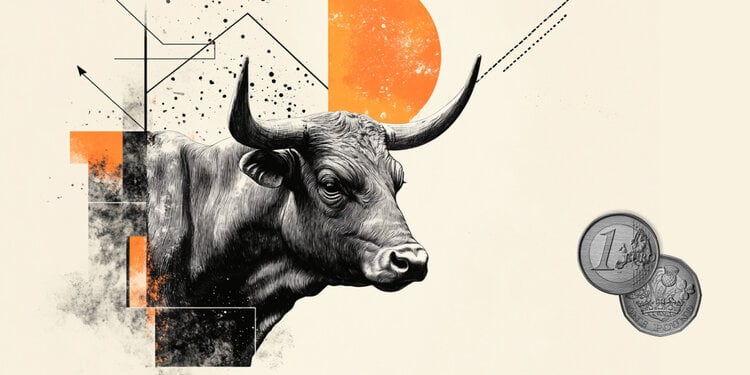EUR/GBP holds positive ground above 0.8550 after UK CPI inflation data

- EUR/GBP strengthens to around 0.8565 in Wednesday’s early European session.
- UK CPI inflation declined to 2.6% YoY in March vs. 2.7% expected.
- The ECB is widely expected to lower interest rates on Thursday, bringing its deposit rate down to 2.25%.
The EUR/GBP cross gains momentum to near 0.8565 during the early European session on Wednesday. The Pound Sterling (GBP) weakens against the Euro (EUR) after the UK Consumer Price Index (CPI) inflation report. The attention will shift to the Eurozone Harmonized Index of Consumer Prices (HICP) data, which is due later on Wednesday.
Data released by the United Kingdom’s Office for National Statistics on Wednesday showed that the country’s headline CPI rose 2.6% YoY in March, compared to a rise of 2.8% in February. This reading came in softer than the 2.7% expected. The Core CPI, which excludes the volatile prices of food and energy, climbed 3.4% YoY in March versus 3.5% prior, in line with the market consensus of 3.4%.
Meanwhile, the monthly UK CPI inflation eased to 0.3% in March from 0.4% in February. Markets projected a rise of 0.4% reading. The Pound Sterling remains weak in an immediate reaction to the cooler-than-expected UK CPI inflation data.
On the Euro front, markets are fully priced for another quarter-percentage-point rate cut by the European Central Bank (ECB) to 2.25% on Thursday. The ECB lowered interest rates for the second consecutive time in March, bringing the deposit rate down to 2.5%. A further reduction would see the rate reduction to 2.25%. Bas van Geffen, a senior macro strategist at Rabobank, noted that confusion caused by Trump’s tariffs could lead to a 25 bps cut, as short-term uncertainties remain a source of concern.
Pound Sterling FAQs
The Pound Sterling (GBP) is the oldest currency in the world (886 AD) and the official currency of the United Kingdom. It is the fourth most traded unit for foreign exchange (FX) in the world, accounting for 12% of all transactions, averaging $630 billion a day, according to 2022 data.
Its key trading pairs are GBP/USD, also known as ‘Cable’, which accounts for 11% of FX, GBP/JPY, or the ‘Dragon’ as it is known by traders (3%), and EUR/GBP (2%). The Pound Sterling is issued by the Bank of England (BoE).
The single most important factor influencing the value of the Pound Sterling is monetary policy decided by the Bank of England. The BoE bases its decisions on whether it has achieved its primary goal of “price stability” – a steady inflation rate of around 2%. Its primary tool for achieving this is the adjustment of interest rates.
When inflation is too high, the BoE will try to rein it in by raising interest rates, making it more expensive for people and businesses to access credit. This is generally positive for GBP, as higher interest rates make the UK a more attractive place for global investors to park their money.
When inflation falls too low it is a sign economic growth is slowing. In this scenario, the BoE will consider lowering interest rates to cheapen credit so businesses will borrow more to invest in growth-generating projects.
Data releases gauge the health of the economy and can impact the value of the Pound Sterling. Indicators such as GDP, Manufacturing and Services PMIs, and employment can all influence the direction of the GBP.
A strong economy is good for Sterling. Not only does it attract more foreign investment but it may encourage the BoE to put up interest rates, which will directly strengthen GBP. Otherwise, if economic data is weak, the Pound Sterling is likely to fall.
Another significant data release for the Pound Sterling is the Trade Balance. This indicator measures the difference between what a country earns from its exports and what it spends on imports over a given period.
If a country produces highly sought-after exports, its currency will benefit purely from the extra demand created from foreign buyers seeking to purchase these goods. Therefore, a positive net Trade Balance strengthens a currency and vice versa for a negative balance.